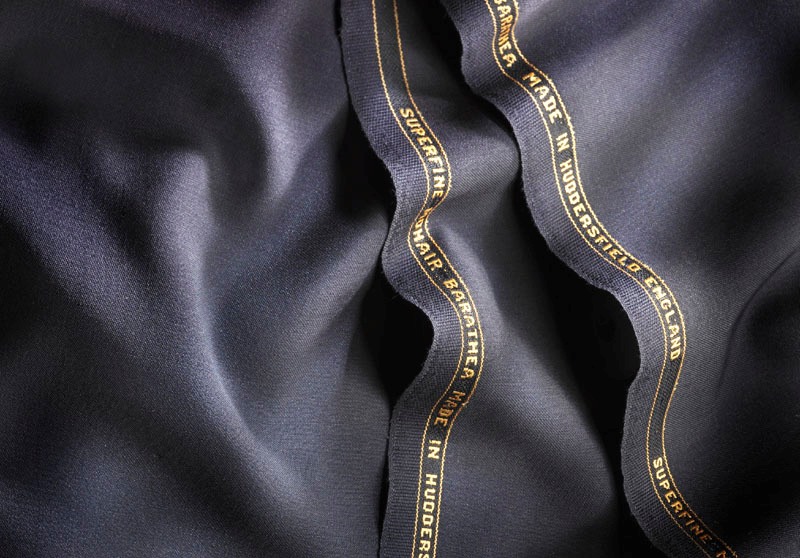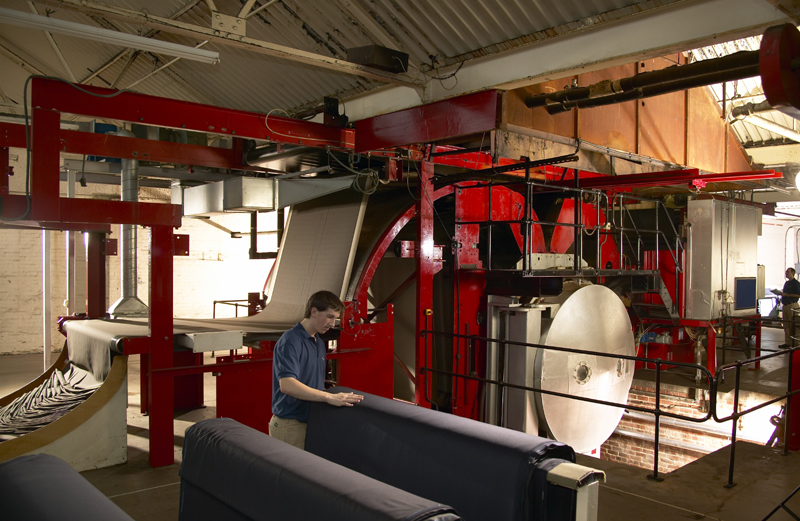WT Johnson: An Intelligent System for Predicting Fabric Finishes
Every piece of luxury fabric goes through multiple stages of manufacturing before it reaches the hands of a fashion designer. From raw materials to spinning and weaving, creating premium cloth is a highly creative and complex process.
Finishing is the final piece of the puzzle, which can transform a piece of woven fabric by adding shine, changing how it feels, and even adding functionality like stain-resistance. WT Johnson & Sons, a family-owned business in Huddersfield, has been finishing luxury woollen fabric since 1910.
“Basically we make fabric special,” smiles Alan Dolley, the company’s Technical Manager.
Alan has worked for the company since he was a teenager, accumulating the wealth of specialist knowledge that makes him what he calls the “first-aid man”.

“When a customer comments on the drape or lustre of the fabric, I’m already mentally making adjustments to the processes we’ve used to give them exactly what they’re looking for,” he explains. “We find that being able to feel a fabric and tell someone what that means in technical terms is a valuable skill.”
Even so, evaluating the finish of a fabric is a subjective process carried out by individuals. This poses challenges for a business like WT Johnson, which balances bulk orders for household name retailers with small volumes of luxury and bespoke cloth for international brands. Achieving consistency between seasons and across large volumes of cloth is the key to the business’ success.
“We are very good at this with our experience and creative judgment, but anything that might increase our accuracy is worth exploring,” Alan says.
“We send samples all over the world to our customers’ international suppliers, and if you could quantify handle, you could sell products globally without physical samples that can go to waste.”

Working with Professor Ningtao Mao at the University of Leeds, WT Johnson led a collaborative project to explore the potential of Leeds University Fabric Handle Evaluation System (LUFHES) in finishing. LUFHES performs a variety of different tests on fabric and translates the results into quantitative data: effectively, a digital ‘fingerprint’.
By connecting this data to samples from WT Johnson’s own archive, the project set out to develop a digital system that links the characteristics of a fabric with the finishing techniques used to achieve them. In turn, this new way of quantifying fabric handle could become useful to ensure consistency in the final product, and even to predict the right techniques to achieve a desired finish.
Ningtao and his team members, Dr Sahar Arshi and Dr Verity Hardy, digitised a variety of fabrics from WT Johnson through LUFHES, and integrated the data into an intelligent system. Based on machine learning models to allow fabric handles to be connected with finish processes and the properties of raw fabrics, the system will learn from new data as they are added.
WT Johnson is currently trialling and evaluating the new software, comparing the data with the subjective experience of fabric handle that the business knows so well.
“This system is incredibly clever, and now it needs to be evaluated against our conventional human experience of fabric handle,” Alan explains. “We absolutely see potential for further work to test and refine it, and it will only become more accurate as the sample size grows and the system learns.”
A predictive system that enables WT Johnson to guarantee right-first-time finishing could drive big improvements in efficiency, as well as reducing the environmental impacts of repeating or adding new processes to fabric. With a quantitative point of reference, the company could immediately identify and reproduce specific finishes that customers prefer.
Ultimately, the system is an example of innovation supporting the creativity and skill of the company’s staff to continue making luxury fabric special for the thousands of fashion designers worldwide using Yorkshire wool in their collections.
“We would never have gone down this road without Future Fashion Factory,” Alan says. “We treasure the subjective experience of fabric handle, but technology that can help us guarantee that accuracy and consistency is particularly valuable.”
